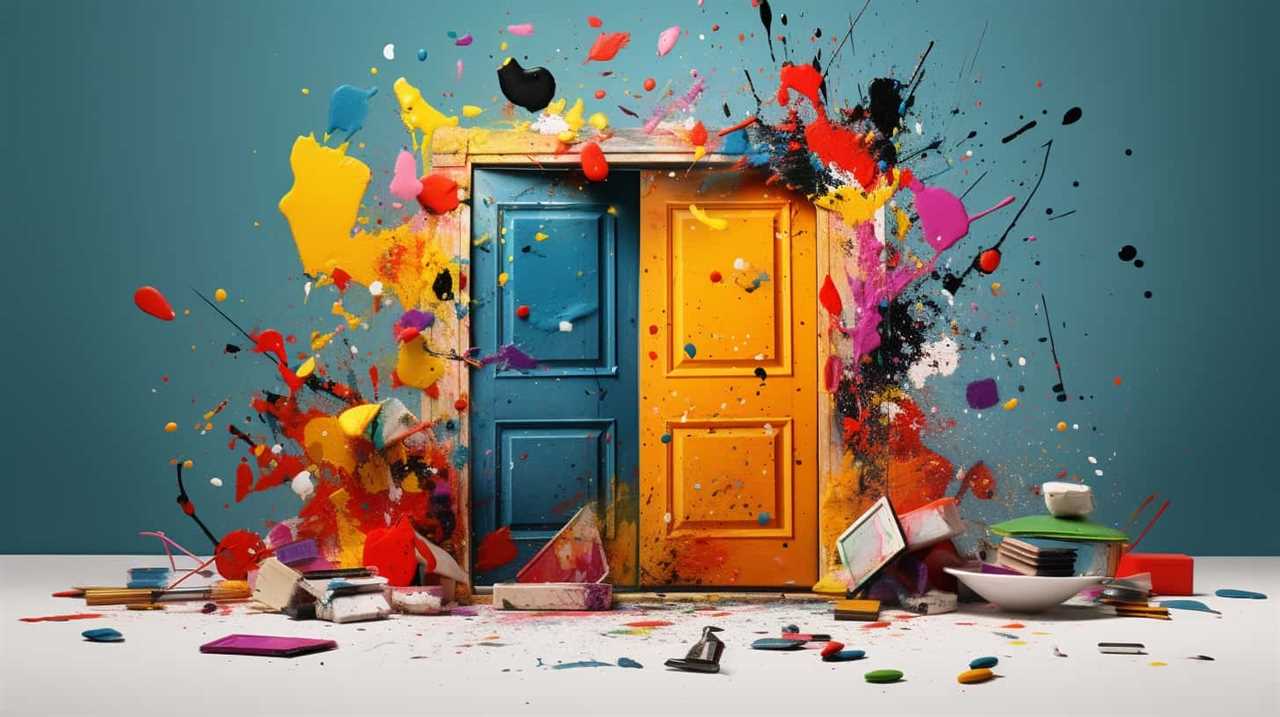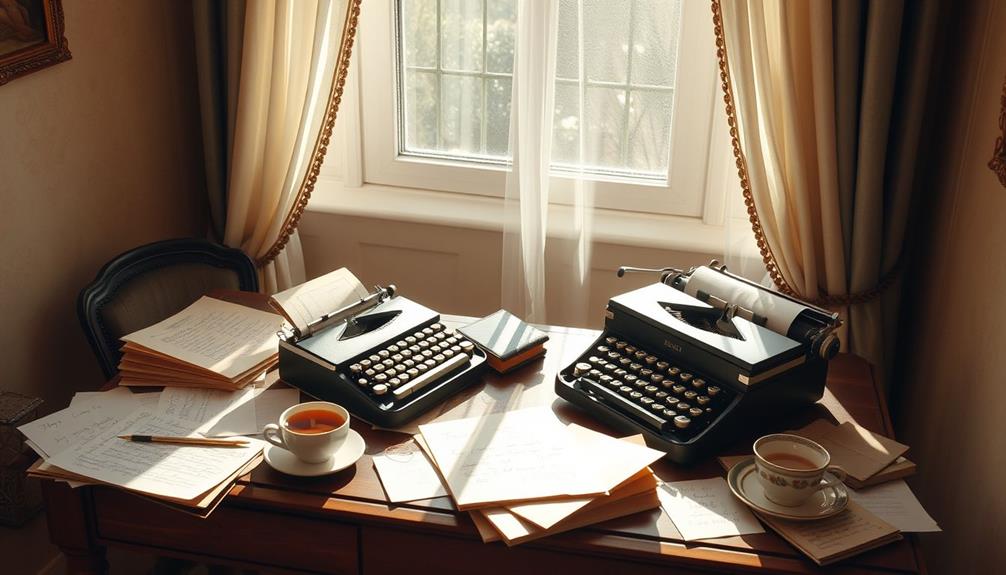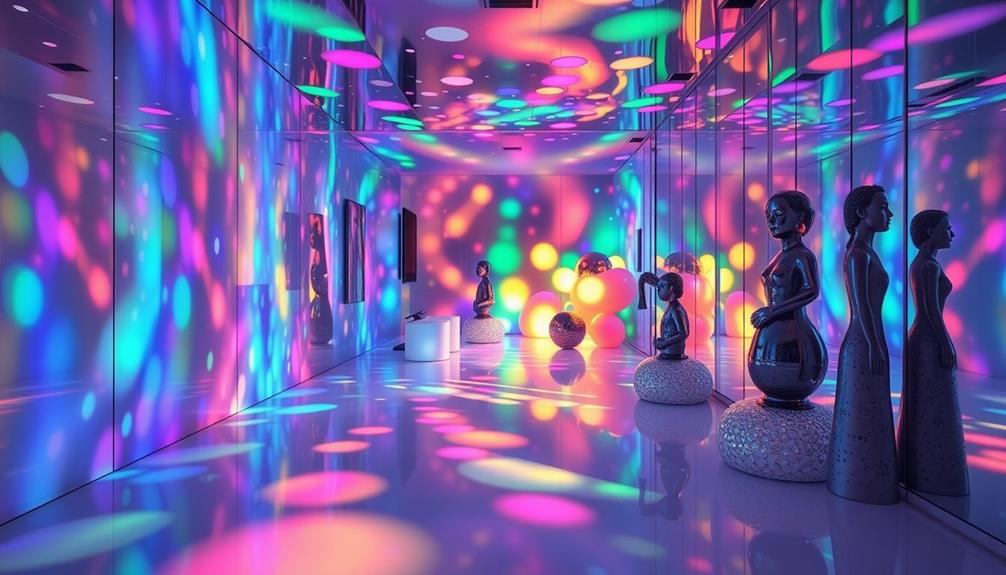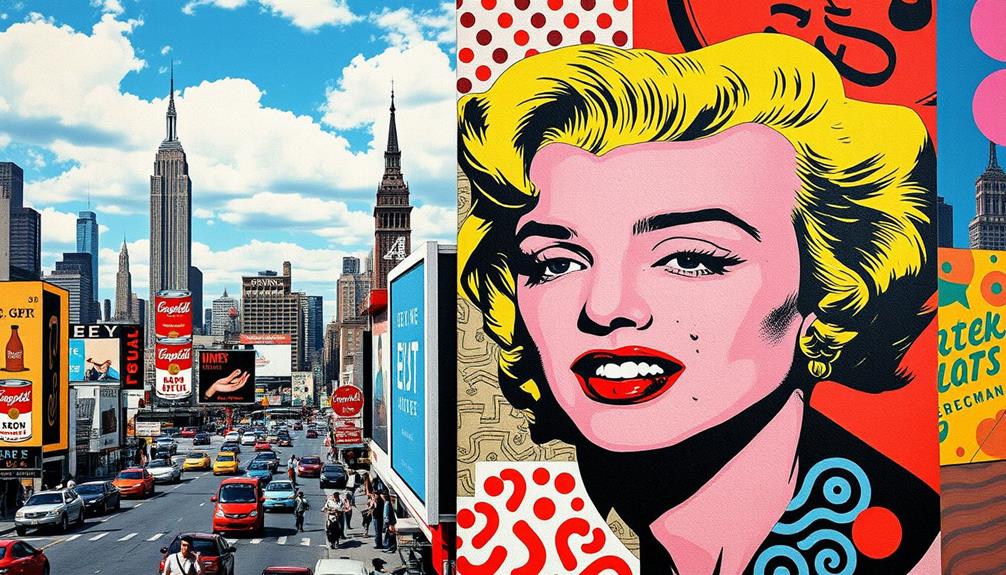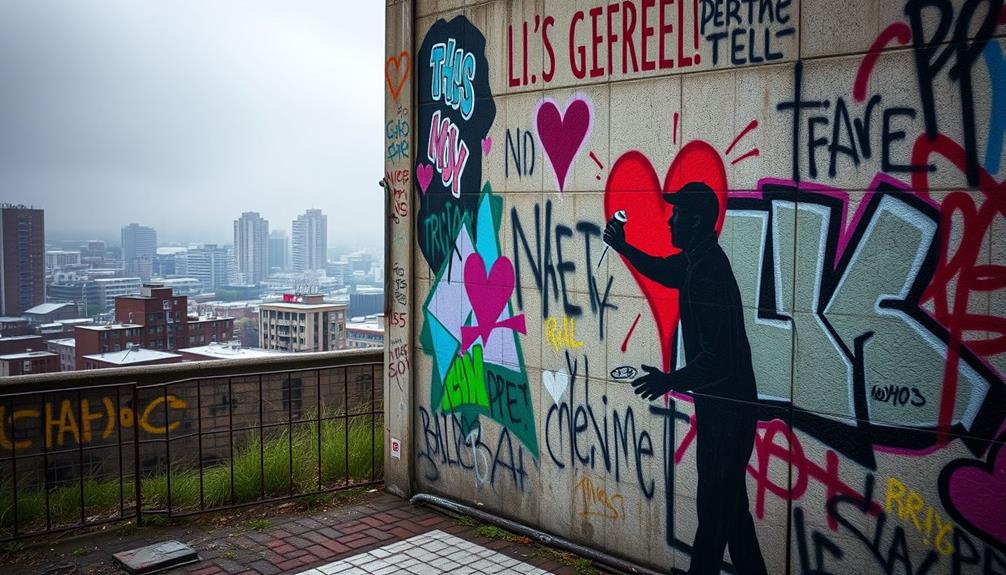Are you an artist interested in exploring outside of the traditional boundaries of art? Look no further!
In ‘Art-Tech Fusion: A How-To Guide for Creatives,’ we, the authors, invite you on an exhilarating journey into the world of art and technology.
This guide is designed to empower you, the artist, with the knowledge and tools needed to unleash your creative potential.
With the rapid advancements in digital technology, there has never been a better time to explore the endless possibilities of art-tech fusion.

From augmented reality to biotechnology, this guide will take you through a step-by-step process of integrating technology into your artistic practice.
Get ready to revolutionize your art and liberate your creativity!
Key Takeaways
- Digital tools and technology have revolutionized the art world, expanding possibilities and enhancing the creative process.
- Virtual reality (VR) enhances artistic experiences by pushing creative boundaries and providing immersive environments.
- Immersive storytelling and interactive installations blur the line between physical and virtual worlds, encouraging active participation from viewers.
- Data visualization and creative data representation techniques transform raw data into visual masterpieces, enhancing understanding and engagement.
The Impact of Digital Tools
The integration of digital tools has revolutionized the art world, enhancing our creative process and expanding our possibilities. As artists, we’re no longer limited to traditional mediums and techniques. With the advent of digital tools, we can seamlessly blend the boundaries between traditional art and technology, creating innovative and captivating works.
Digital tools have allowed us to experiment with different styles, textures, and colors, without the fear of making irreversible mistakes. We can easily undo and redo, giving us the freedom to explore and push our artistic boundaries. Moreover, digital tools have made the process of creating art more accessible and affordable. We no longer need to invest in expensive art supplies or worry about storage space for our artwork. Everything we need is at our fingertips, with a simple click or swipe.

Furthermore, social media has played a significant role in promoting our art to a wider audience. Platforms like Instagram and Facebook have become virtual galleries, allowing us to share our work with millions of people around the world. Through social media, we can connect with fellow artists, collaborate on projects, and even sell our artwork directly to buyers.
Exploring Augmented Reality
Exploring the potential of augmented reality, we can now take our art to new heights by seamlessly merging the digital and physical worlds. Augmented reality (AR) is revolutionizing various industries, including fashion and education. Here are five exciting ways AR is transforming these fields:
- Augmented reality in fashion: With AR, fashion enthusiasts can try on virtual outfits before making a purchase. They can mix and match different styles, colors, and accessories, allowing them to experiment and express their unique sense of style. AR also enables designers to showcase their collections in immersive virtual fashion shows, reaching a global audience without the limitations of physical events.
- Augmented reality in education: AR is enhancing learning experiences by providing immersive and interactive content. Students can explore ancient civilizations, dissect virtual organisms, or simulate scientific experiments, making education more engaging and accessible. AR also offers personalized learning opportunities, catering to individual needs and learning styles.
- Augmented reality in art creation: Artists can use AR to bring their creations to life. They can transform static artworks into dynamic experiences, incorporating interactive elements and animations. Viewers can engage with the artwork using their smartphones or AR devices, unlocking hidden layers of meaning and storytelling.
- Augmented reality in cultural preservation: AR allows us to preserve and showcase cultural heritage in innovative ways. By overlaying virtual artifacts onto real-world locations, we can bridge the gap between past and present, enabling visitors to explore and understand historical sites and artifacts in a more immersive and interactive manner.
- Augmented reality in social activism: AR can be a powerful tool for raising awareness and sparking conversations about social issues. Activists can create AR experiences that shed light on important topics, such as climate change, human rights, and equality. By blending the digital and physical worlds, AR can inspire action and drive positive change.
As we delve into the possibilities of augmented reality, we can now transition into the next section, where we’ll explore the realm of virtual reality and its impact on artistic expression.
Virtual Reality and Artistic Expression
Let’s take a leap into the exciting realm of Virtual Reality and explore how it enhances artistic experiences.
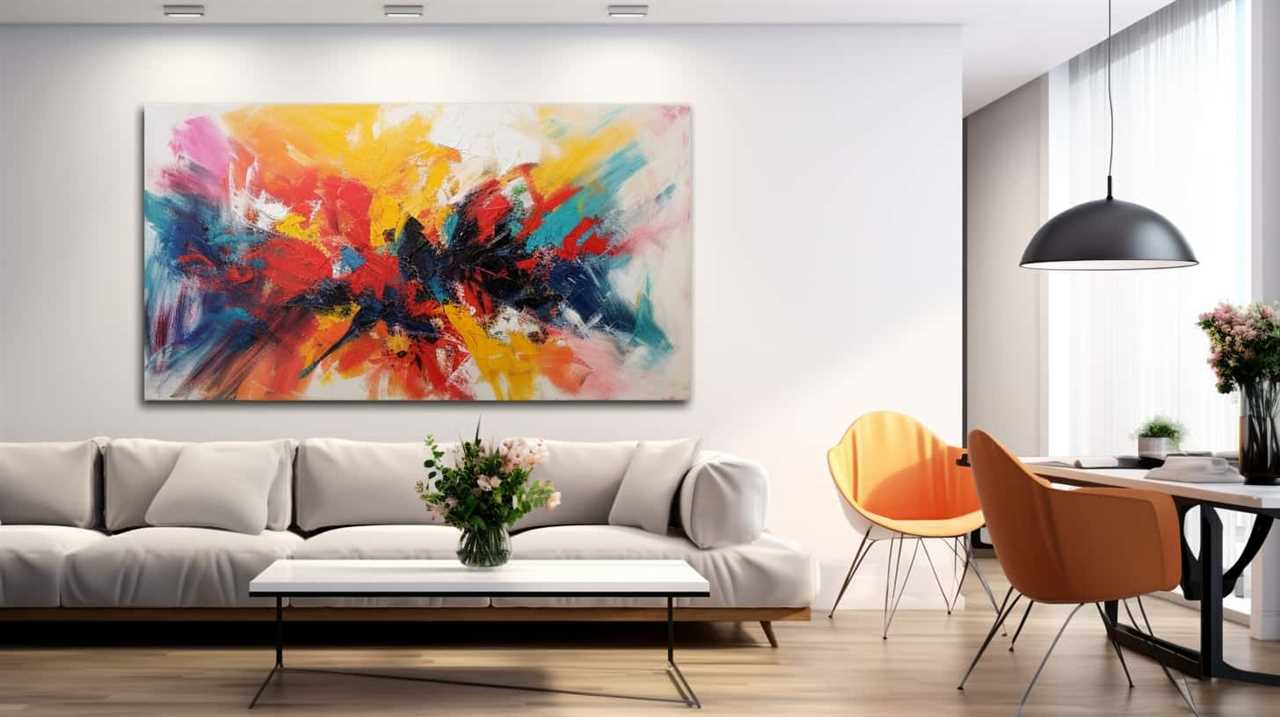
With VR, we’ve the power to push creative boundaries and transform traditional art forms into immersive, multidimensional experiences.
Imagine stepping into a painting or becoming a character in a story, VR allows us to create captivating and interactive art that takes storytelling to new heights.
Enhancing Artistic Experiences
We believe that incorporating virtual reality into artistic expression can greatly enhance the overall artistic experience. Virtual reality has the power to transport us to new worlds and unlock our imagination like never before.
Here are five ways in which virtual reality can enhance artistic experiences:
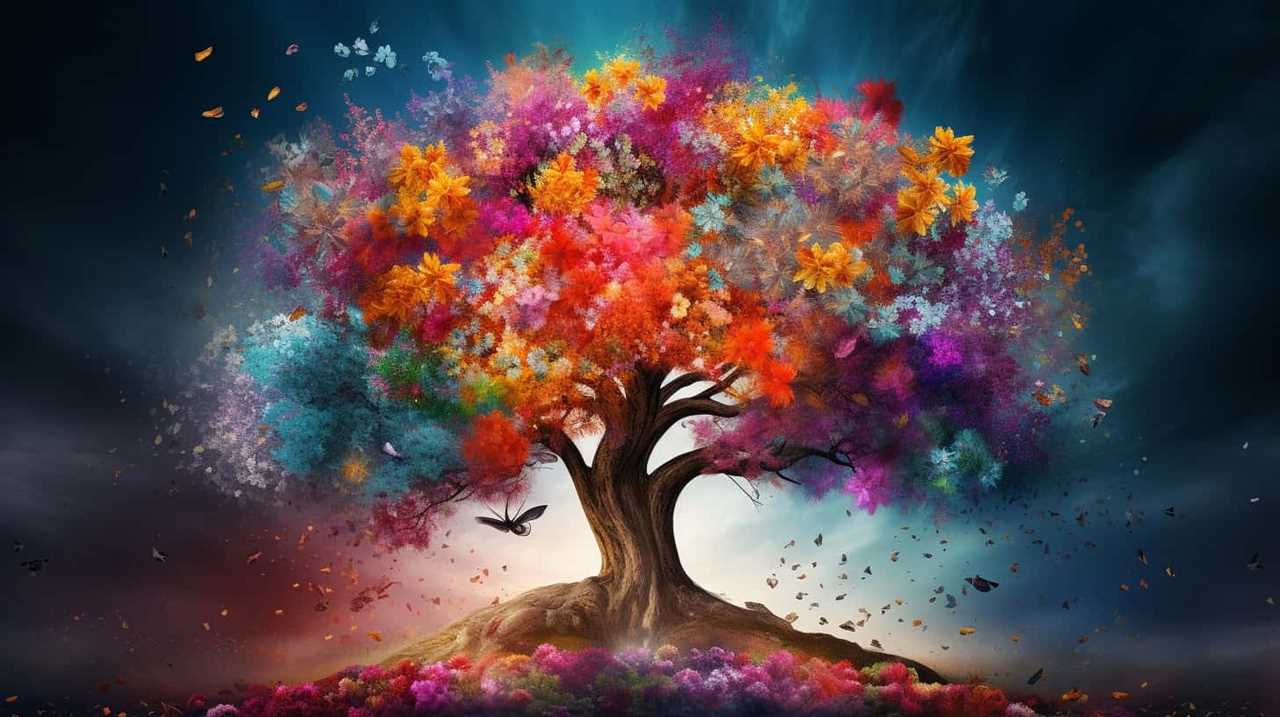
- Immersive environments: Virtual reality allows artists to create fully immersive environments that engage all our senses, transporting us to new dimensions of creativity.
- Interactive storytelling: Virtual reality enables artists to create interactive narratives, where viewers can actively participate and shape the outcome of the story.
- Collaborative creation: Virtual reality breaks down geographical barriers, allowing artists from different parts of the world to collaborate and co-create, fostering a global artistic community.
- Multi-sensory experiences: Virtual reality can incorporate haptic feedback, soundscapes, and even scent, adding new dimensions to artistic expression.
- Empathy and perspective: Virtual reality can be a powerful tool for artists to create experiences that foster empathy and help viewers see the world from different perspectives.
Through the fusion of art and technology, virtual reality opens up infinite possibilities for enhancing creativity and artistic collaboration, liberating artists to push boundaries and redefine the artistic experience.
Pushing Creative Boundaries
By pushing the boundaries of artistic expression with virtual reality, we can delve deeper into the realms of creativity and unlock new possibilities for immersive experiences. Virtual reality allows us to explore unconventional techniques and break free from the constraints of traditional art forms. It liberates our imagination and enables us to create in ways never before imagined.
With VR, we can paint in three dimensions, sculpt in virtual space, and bring our creations to life with motion and sound. We can challenge the norms of what’s considered art and redefine the limits of artistic expression. Virtual reality opens up a whole new world of possibilities, where the only limitation is our own imagination.
As we venture further into the realm of immersive storytelling through VR, we’ll discover even more ways to push the boundaries of creativity and captivate audiences like never before.
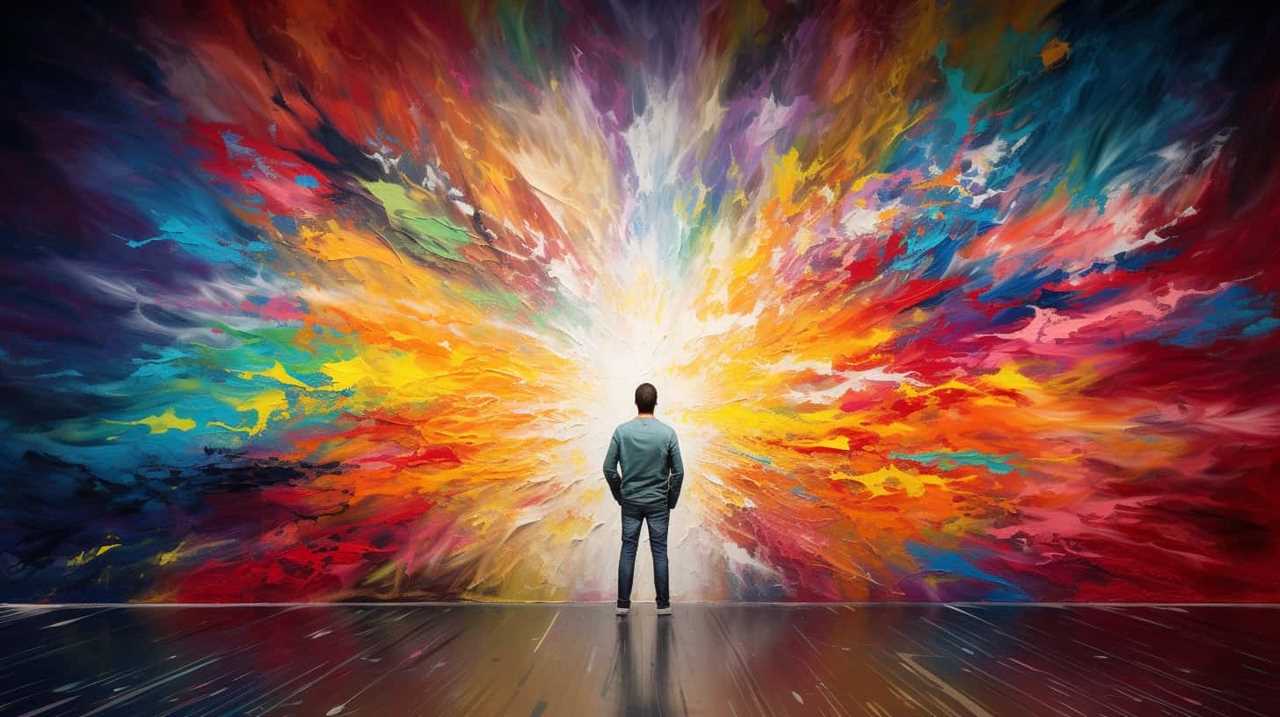
Immersive Storytelling Through VR
With the advent of virtual reality, artists can now fully immerse their audiences in a world of artistic expression. Virtual reality has opened up endless possibilities for immersive storytelling, allowing artists to create experiences that transport viewers into new realms of imagination.
Here are five ways artists are utilizing VR to push the boundaries of artistic expression:
- Creating immersive gaming experiences that blur the lines between reality and fantasy, captivating players in a world of interactive art.
- Using virtual reality therapy as a tool for healing, providing an immersive and therapeutic experience for individuals dealing with mental health issues or trauma.
- Experimenting with virtual reality filmmaking to craft immersive narratives that allow viewers to step into the story and become active participants.
- Collaborating with technologists to develop virtual reality art installations that push the boundaries of traditional art forms and challenge viewers’ perspectives.
- Using virtual reality to create interactive art experiences that engage the senses and allow viewers to explore and interact with the artwork in new and exciting ways.
Through the power of virtual reality, artists are revolutionizing the way we experience and interact with art. As we delve into the world of interactive installations and technology, we’ll explore how artists are harnessing the potential of innovative technologies to create transformative art experiences.
Interactive Installations and Technology
Our guide will explore the various ways technology can be used to create engaging and interactive installations. Technology integration in art has revolutionized the way we experience and interact with art, breaking down traditional barriers and creating new possibilities for creativity and engagement. Interactive installations combine the power of technology with artistic expression, resulting in immersive experiences that captivate and inspire.
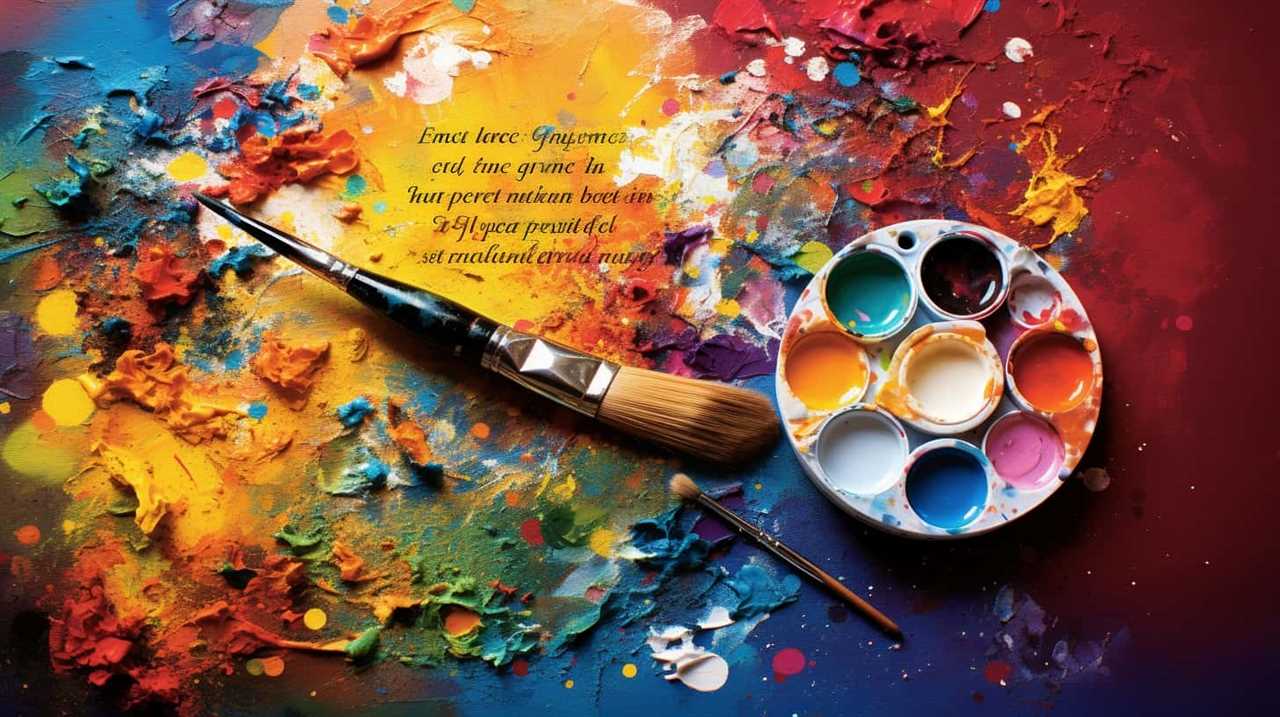
To illustrate the potential of interactive installations, let’s take a look at the following table:
| Technology | Installation | Description |
|---|---|---|
| Projection Mapping | Augmented Reality (AR) | Overlays digital content onto physical objects, enhancing reality. |
| Motion Sensors | Kinetic Sculptures | Detects movement and triggers kinetic elements, bringing art to life. |
| Virtual Reality (VR) | Multi-Sensory Environments | Creates fully immersive experiences, stimulating all the senses. |
By integrating technology into their work, artists can create installations that blur the line between the physical and virtual worlds. Projection mapping allows for the transformation of static objects into dynamic canvases, while motion sensors enable sculptures to respond to the viewer’s presence. Virtual reality takes immersion to the next level, transporting participants into entirely new environments.
These interactive installations not only engage the audience on a deeper level but also encourage active participation, transforming spectators into active participants. The fusion of art and technology opens up endless possibilities for creativity and expression, empowering artists and viewers alike. As technology continues to advance, the potential for interactive installations will only grow, pushing the boundaries of what is possible in the art world.
Data Visualization in Art
Let’s explore the exciting realm of data visualization in art and its impact on creativity.
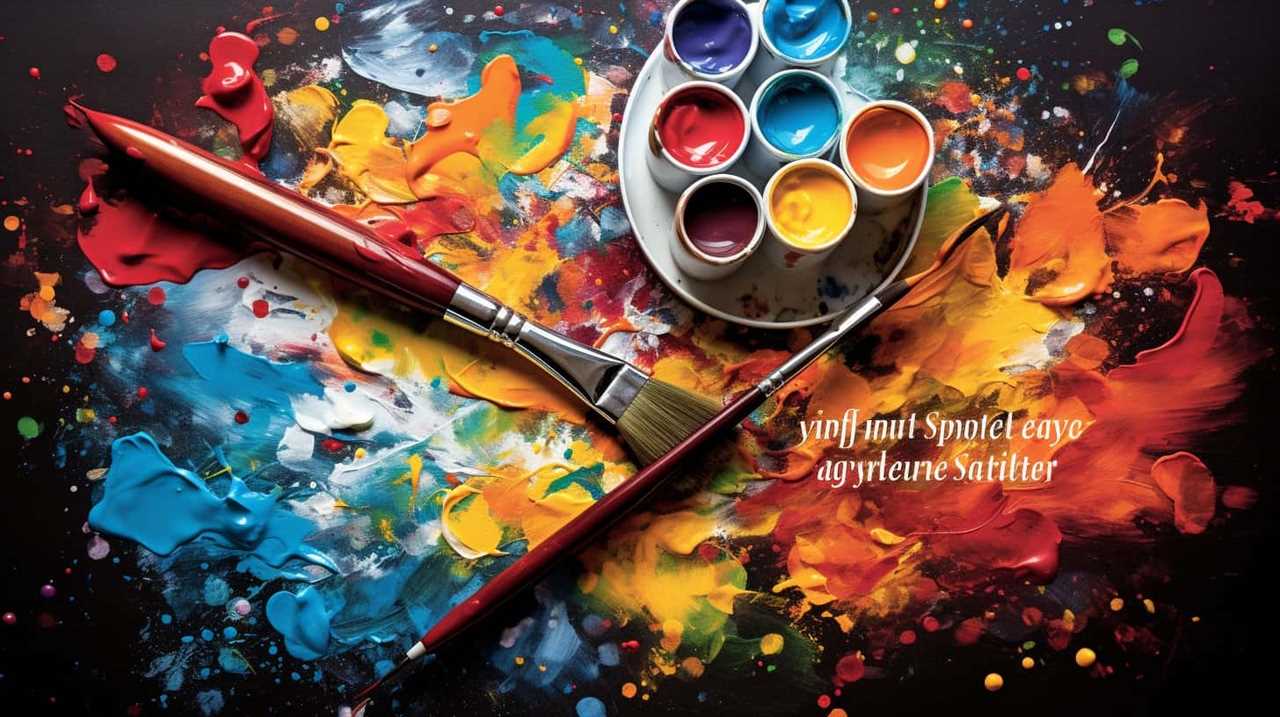
With the abundance of data available today, artists have a unique opportunity to transform numbers and statistics into visually captivating works of art.
Impact of Data
Data visualization plays a crucial role in merging art and technology, allowing us to convey complex information in a visually engaging and accessible manner. Here are five key ways that data visualization impacts the art-tech fusion:
- Simplifies Complexity: Data visualization transforms intricate data sets into clear and concise visuals, enabling us to grasp complex information effortlessly.
- Enhances Accessibility: By presenting data in a visual format, it becomes more accessible to a wider audience, making it easier for everyone to understand and engage with the information.
- Sparks Creativity: Data visualization inspires artists to explore new ways of representing data, pushing the boundaries of creativity and merging art with technology.
- Raises Ethical Questions: The use of data in art raises concerns about data privacy and ethical implications. Artists must navigate these issues responsibly and ensure they respect individuals’ rights and consent.
- Promotes Data Literacy: Through art, data visualization helps promote data literacy and encourages individuals to think critically about the information presented.
As we delve into the next section on creative data representation, we’ll explore how artists are using innovative techniques to bring data to life in captivating and thought-provoking ways.
Creative Data Representation
The impact of data visualization on the art-tech fusion extends to creative data representation, where artists employ innovative techniques to bring data to life in captivating and thought-provoking ways.
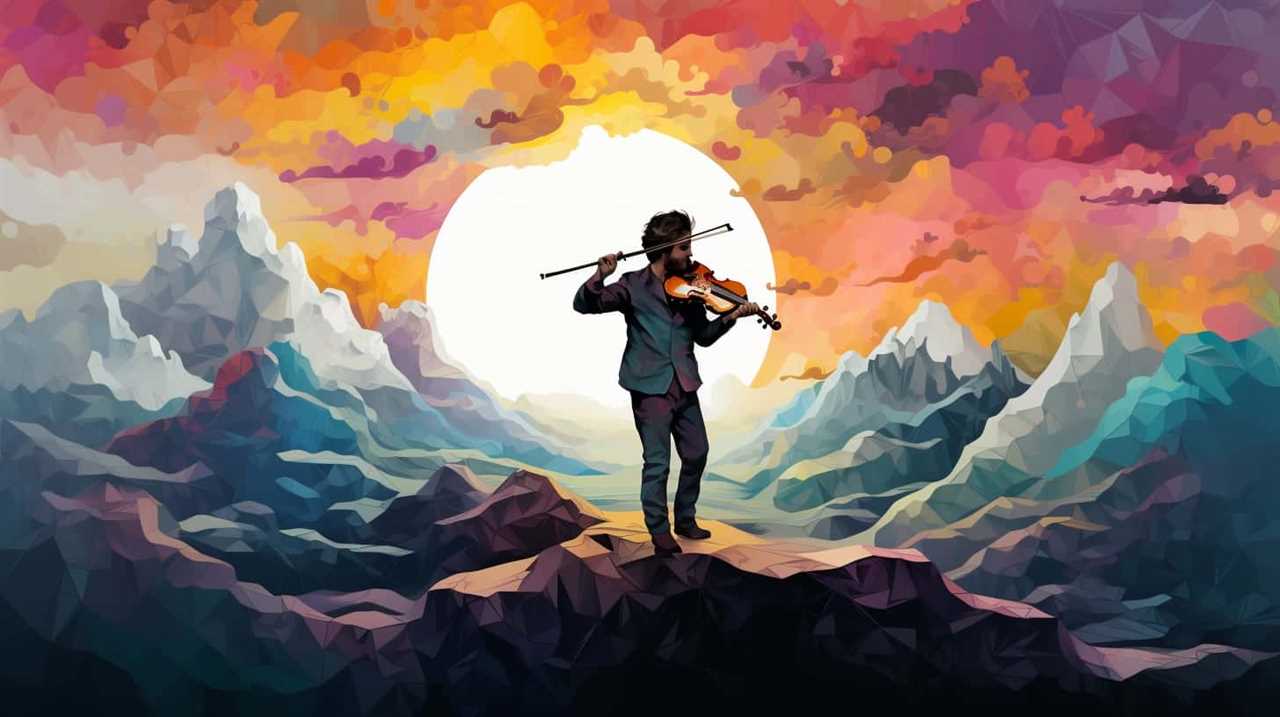
Creative data analysis allows artists to delve deep into the data, uncovering hidden patterns and insights that can inspire their artistic creations.
By merging technology and artistic expression, artists can transform raw data into visual masterpieces that engage and challenge the viewer.
Innovative data representation techniques, such as interactive installations, immersive virtual reality experiences, and dynamic sculptures, push the boundaries of traditional art forms, creating a new realm of artistic expression.
These innovative approaches not only enhance our understanding of complex data sets but also provide a liberating experience for the audience, empowering them to interpret and engage with the information in their own unique way.

As we explore the realm of creative data representation, we delve into the exciting world of artistic data interpretation.
Artistic Data Interpretation
As we delve into the realm of art-tech fusion, we can explore the powerful impact of artistic data interpretation through data visualization in art. The marriage of artistic interpretation and creative data representation opens up a world of possibilities for artists to communicate complex ideas and narratives in visually captivating ways. Here are five ways in which artists are utilizing data visualization to push the boundaries of artistic expression:
- Transforming raw data into visually stunning images and sculptures
- Creating interactive installations that allow viewers to engage with the data
- Using data visualization techniques to tell compelling stories and convey emotions
- Incorporating real-time data streams into their artwork, reflecting the dynamic nature of our world
- Collaborating with data scientists and technologists to uncover hidden patterns and insights within the data
Now, let’s delve into the exciting intersection of 3D printing and sculpture.
3D Printing and Sculpture
In our exploration of art-tech fusion, we delve into the fascinating realm of 3D printing and its application in sculpture. 3D printing has revolutionized the way we create art, allowing us to bring our wildest imaginations to life in a matter of hours. With this innovative technology, we can push the boundaries of traditional sculpture and explore new possibilities.

One of the most exciting aspects of 3D printing in sculpture is its ability to seamlessly integrate with mixed media. By combining traditional sculpting techniques with the precision and versatility of 3D printing, artists can create truly unique and captivating pieces. Imagine a sculpture that combines the delicate intricacy of handcrafted ceramic with the boldness of 3D printed metal. The possibilities are endless.
Not only does 3D printing open up new avenues for creativity, but it also allows artists to experiment with form and structure in ways that were once unimaginable. With the ability to print complex geometries and intricate details, artists can push the boundaries of what’s physically possible. The result is a fusion of art and technology that challenges our perception of what sculpture can be.
Biotechnology and Artistic Experimentation
Let’s dive into the realm of biotechnology and explore how it merges with artistic experimentation. Biotechnology and artistic collaborations have opened up new possibilities for creatives to push boundaries and challenge traditional notions of art. Here are some exciting ways in which biotech is transforming the artistic landscape:
- Living sculptures: Imagine sculptures created not from stone or metal, but from living organisms. Biotechnology allows artists to manipulate and engineer living cells to create captivating sculptures that evolve and change over time.
- Biofabrication: Artists are now using biotech processes to grow and shape living tissues into unique and intricate forms. It blurs the line between art and science, creating a fusion that captivates and challenges our perceptions.
- Bioluminescent art: By harnessing the natural light emitted by organisms, artists can create stunning installations and paintings that come alive in the darkness. These artworks not only mesmerize viewers but also raise questions about the ethical implications of using genetically modified organisms for art.
- Biohacking performances: Some artists are exploring the limits of their own bodies by incorporating biotech implants or genetic modifications into their performances. It pushes the boundaries of what’s considered art and raises important ethical considerations.
- DNA art: Artists are using DNA as a medium to create unique and personalized artworks. By extracting and manipulating genetic material, they can create visually striking pieces that reflect the diversity and complexity of life itself.
The intersection of biotechnology and art offers a wealth of possibilities for creative expression. However, it also raises ethical questions about the boundaries between nature and technology, and the potential consequences of manipulating living organisms for artistic purposes. As artists continue to experiment and collaborate with biotech, it’s crucial to engage in thoughtful discussions about the ethical implications and ensure that artistic expression doesn’t come at the expense of the natural world.
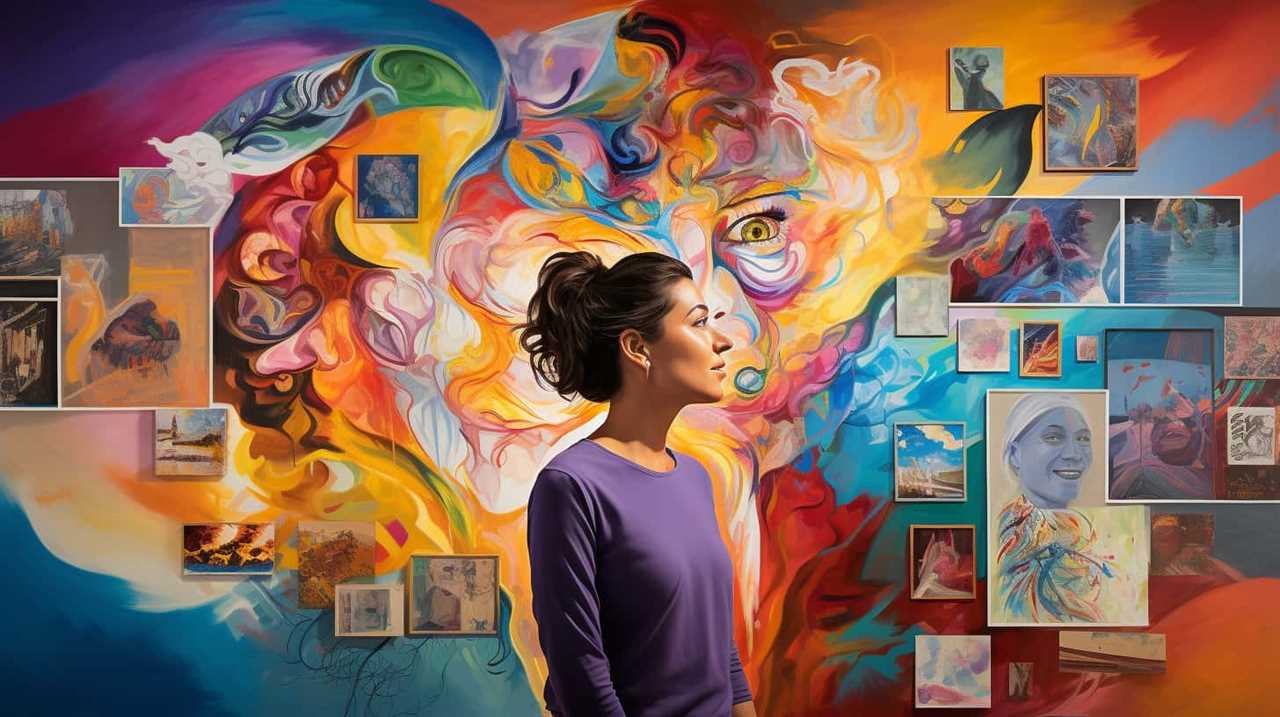
Artificial Intelligence in the Creative Process
We incorporate artificial intelligence to enhance our creative process. By harnessing the power of machine learning in music production and AI generated artwork, we are pushing the boundaries of artistic expression. The fusion of art and technology allows us to explore new realms of creativity and liberation.
One of the most exciting applications of artificial intelligence in the creative process is in music production. Using machine learning algorithms, AI can analyze vast amounts of musical data and generate unique compositions that challenge traditional notions of melody and harmony. This opens up a world of possibilities for musicians and composers, allowing them to break free from conventional structures and explore new sonic landscapes.
In the realm of visual arts, AI generated artwork is revolutionizing the way we create and perceive art. Through deep learning algorithms, artificial intelligence can analyze and interpret visual patterns, leading to the creation of stunning and unconventional pieces. This technology enables artists to push the boundaries of their imagination, creating artworks that challenge societal norms and provoke thought.
To give you a glimpse of the possibilities, here’s a table showcasing some examples of how artificial intelligence is transforming the creative process:
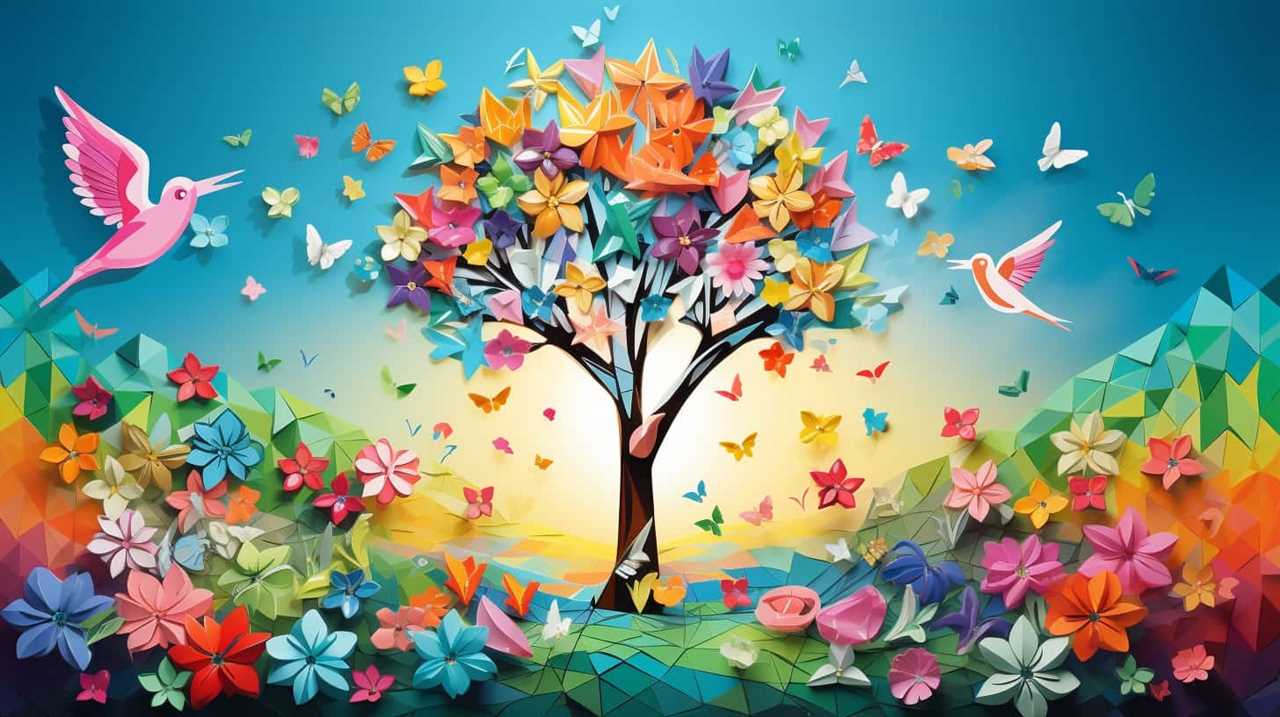
| Creative Field | AI Application | Result |
|---|---|---|
| Music Production | Machine learning algorithms | Unique compositions |
| Visual Arts | Deep learning algorithms | Unconventional art |
| Literature | Natural language processing | Experimental writing |
With artificial intelligence as our creative partner, we are breaking free from traditional constraints, exploring new territories, and liberating ourselves from the boundaries of creativity. The fusion of art and technology is ushering in a new era of artistic expression, where innovation and liberation go hand in hand.
Frequently Asked Questions
How Can Digital Tools Enhance the Creative Process for Artists?
Digital tools revolutionize the creative process for artists. Technology advancements offer limitless possibilities, empowering us to explore new mediums, experiment with innovative techniques, and collaborate with artists worldwide. Liberation through art-tech fusion is our ultimate goal.
What Are the Benefits of Exploring Augmented Reality in Artistic Expression?
Exploring augmented reality in artistic expression offers numerous benefits. It allows us to push creative boundaries, engage with audiences in new ways, and break free from traditional constraints. The possibilities are limitless, and the liberation is exhilarating.
How Can Interactive Installations Incorporating Technology Create a Unique Artistic Experience?
Interactive installations incorporating technology create a mind-blowing artistic experience that transcends boundaries. With cutting-edge innovations, we unleash a new era of creativity, breaking free from traditional constraints and immersing audiences in a world of limitless possibilities.
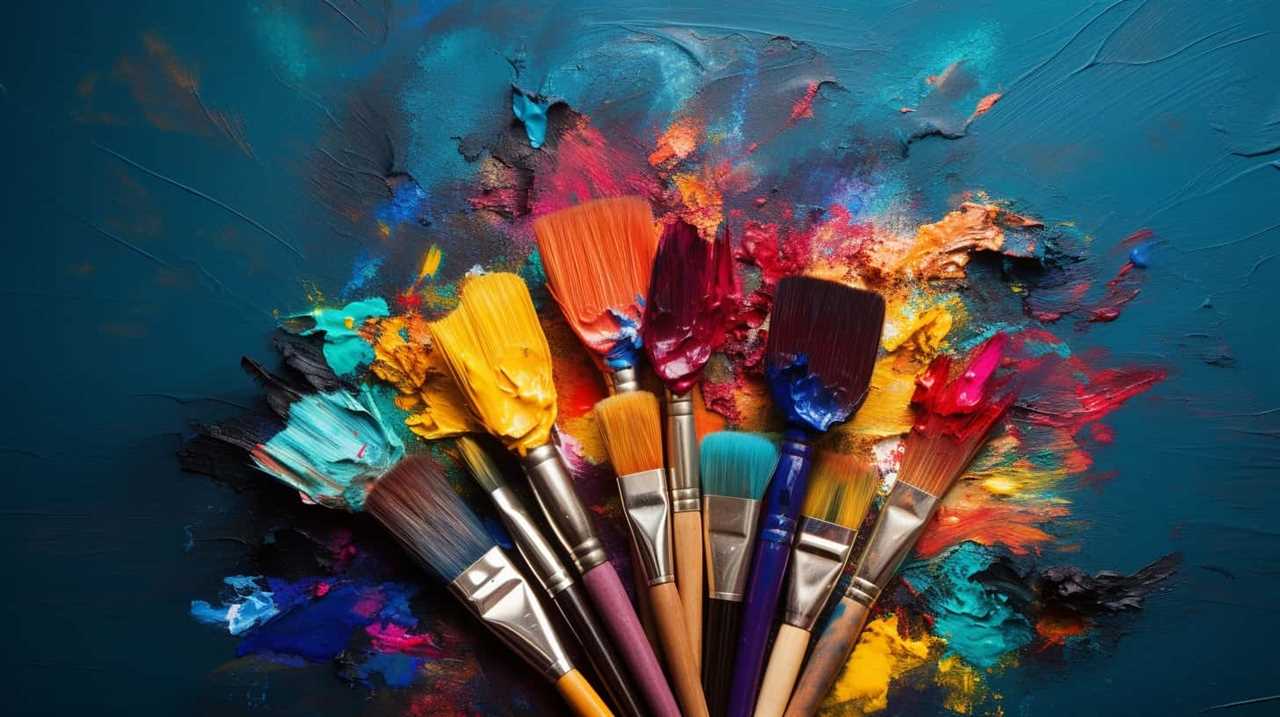
What Role Does Data Visualization Play in the World of Art?
Data visualization plays a crucial role in the art world, allowing us to liberate information from its traditional confines. Through innovative techniques, we can transform data into stunning visual representations that engage and challenge the viewer’s perception.
How Does 3D Printing Revolutionize Sculpture-Making Techniques?
How does 3D printing revolutionize sculpture-making techniques? With its limitless possibilities, 3D printing applications have shattered the boundaries of traditional sculpture. Technology has set us free, empowering creatives to bring their wildest imaginations to life.
Conclusion
As we dive deeper into the fusion of art and technology, the possibilities seem limitless.
Did you know that according to a recent survey, 85% of artists believe that digital tools have had a positive impact on their creative process? This statistic highlights the transformative power of technology in the art world.
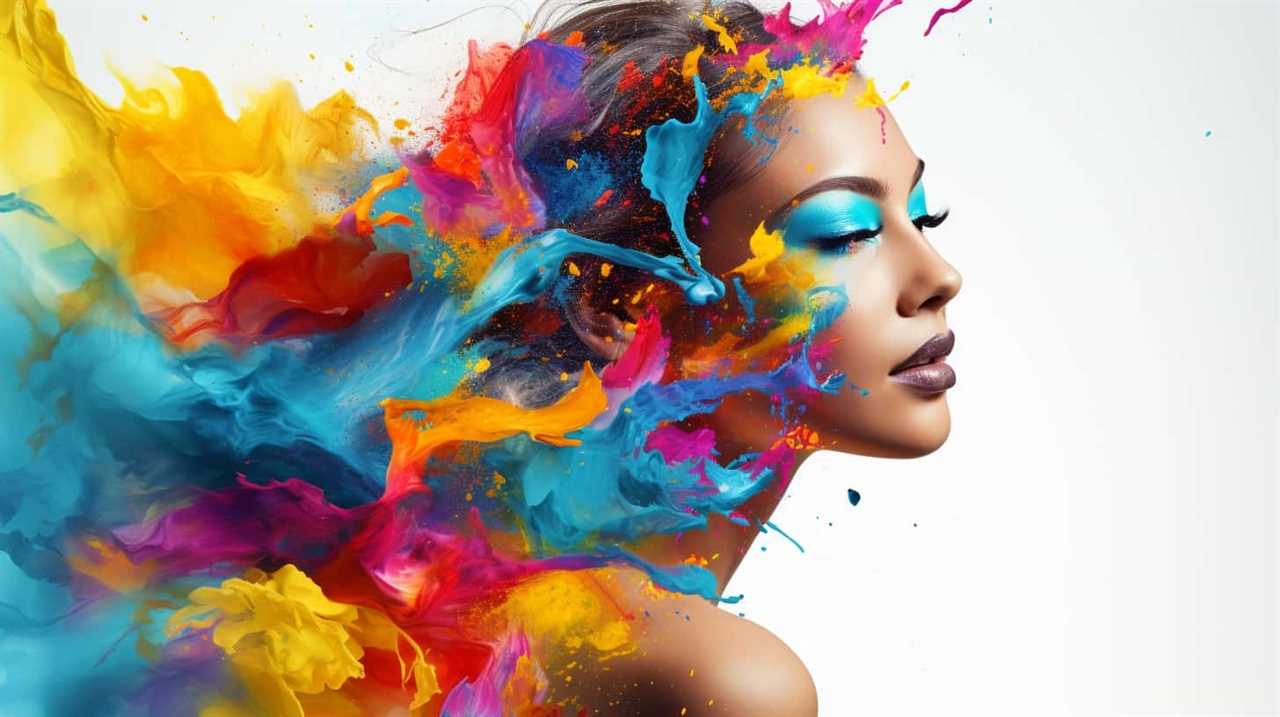
With augmented reality, virtual reality, interactive installations, data visualization, 3D printing, biotechnology, and artificial intelligence, artists can push boundaries like never before.
The future of art-tech fusion is an exhilarating journey of innovation and creativity.
Lauren’s talent in writing is matched by her passion for storytelling. Her love for books and deep understanding of culture and entertainment add a distinct flavor to her work. As our media and press contact, Lauren skillfully bridges the gap between afterQuotes and the broader media landscape, bringing our message to a wider audience.



